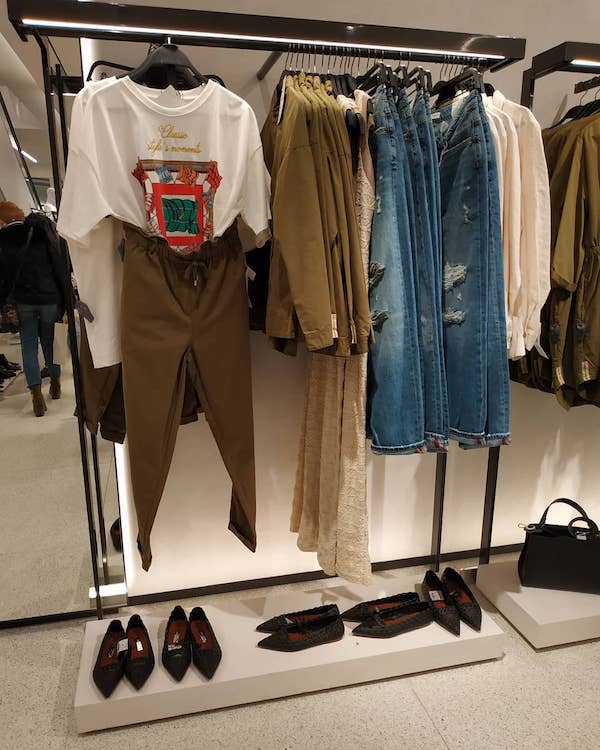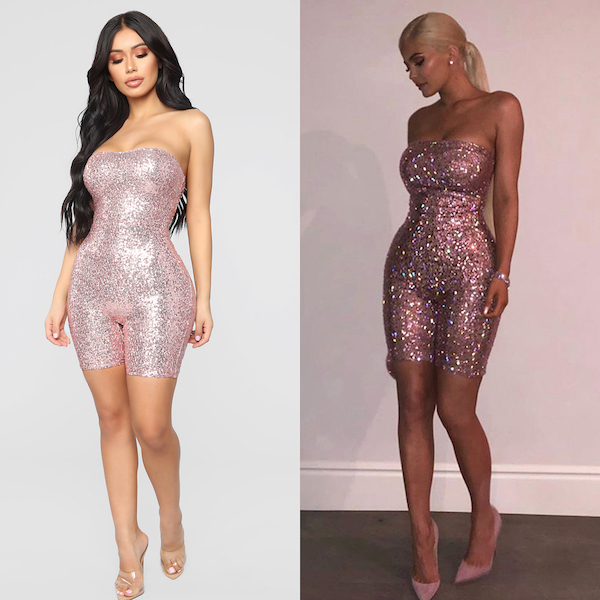A cute shirt for a date when you don’t have time to go home and change after work; a closet full of clothes to ensure you don’t end up on social media in the same outfit twice; the ability to indulge in retail therapy regularly even on a super tight budget: These are the appeals of fast fashion.
But for all the affordable, on-trend finds offered by retail chains that fall into the “fast fashion” category – the Zaras, H&Ms, Forever 21s, and Fashion Novas of the world – the industry has a dark side that is tough to ignore once you know the details.
By now, many of us are aware of the detrimental environmental impacts of the fast fashion industry: cheaply made and super trendy clothes have a short closet life and make their way into landfills at alarming rates, where they take hundreds of years to break down. Not to mention, the fast fashion industry is one of the biggest consumers of water globally. On the positive, a growing awareness of this has helped business for the resale industry, as stigma-free consignment stores are back with a vengeance.

Damage to the planet aside, there’s another ugly side to fast fashion that’s made headlines in recent years: Copycats.
Fast fashion retailers are known for ripping off designers’ pieces, not only infringing on creative ownership, but contributing to larger global issues and concerns as well. Fast fashion retailers have replicated looks fresh from both the high fashion runways and smaller labels, offering knock-offs at a fraction of the price for fashion-lovers on a budget.
Hard-working fashion designers – who have pounded the pavement for years in an incredibly competitive sphere — are now seeing the designs they created mass produced for a fraction of the cost, with subpar materials, and often unethically.

In short, many big businesses are taking advantage of the entrepreneurial fashion designer.
The reason why the fast fashion players can get away with it is that ripping off the designs of others is pretty much completely legal in the United States thanks to dated copyright laws that set the criteria for patent-protecting a fashion design extremely high. The details and red tape involved make most designs unqualified for copyright protection thanks to a set of rules outlined over four decades ago that essentially views fashion as a manufacturing industry instead of a creative one like film, literature, or music.
Unless they have incredibly unique and specific design details or patented or trademarked logos, designers are out of luck in the U.S. when it comes to protecting their creations. Even if a total knock-off was completely questionable and offside, few smaller designers have the funds to take legal action.
Aside from the tight regulations, fast fashion retailers can also get away with copying other designs by playing the blame game, pointing fingers at their vendors if they don’t design all of their clothing in-house.
Private labelling between brands and suppliers is a much bigger market than many may assume, accounting for almost one third of the apparel market. The shady part of the practice of private labelling, however, means factories in parts of the world where brands have little control of any happenings, from business practices to copycats. Though it may be easy to turn a blind eye to for some, many of fast fashion’s third party factory workers are poorly paid and endure terrible working conditions.

What does private labelling mean for the average shopper?
It means you can purchase the exact same item of clothing from two different stores – most likely at different price points – because the two retailers buy from the same vendors. Identical items of clothing are sold to a handful of labels at different price points to the often blissfully unaware customer. Private labelling, in theory, also makes it difficult for customers to easily compare prices the way they could a brand – say Levi’s or Ralph Lauren – that are sold at a variety of retail outlets. That’s not to say that savvy social media users haven’t taken to Instagram to compare and contrast virtually identical pieces from different retailers – they definitely have and continue to do, as brands’ posts continue to generate double taps.

Speaking of social media, fuelled by a “like”-obsessed and an on-demand culture that moves faster than ever, fast fashion is moving at an accelerated pace.
Fashion Nova – who famously created a capsule collection inspired by Kylie Jenner’s 21st birthday party outfit just two days after the billionaire blew out her candles – releases 600 to 900 new items per week. Meanwhile, new items are delivered to fast fashion giant Zara’s 2,238 stores worldwide twice a week.
Between the beating it takes on the planet, the way it can exploit workers around the world, and the fact that it rips off hardworking designers, it may be enough to make you think twice about maintaining a closet full of fast fashion finds.
Featured image: Pexels
Articles You Might Be Interested In:
Inside The Dirty World Of Counterfeit Sneakers
This Is What It’s Like Shopping Online At Fashion Nova
Forever 21 Accused Of Stealing Designs From Local Canadian Designers
Here’s Why Counterfeit Makeup Is A Real Threat To Your Health
H&M Will Be Closing 160 Of Its Stores This Year
